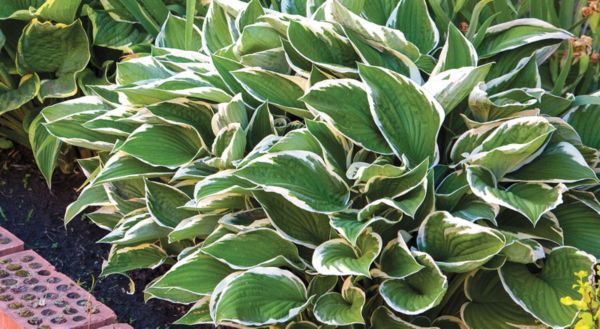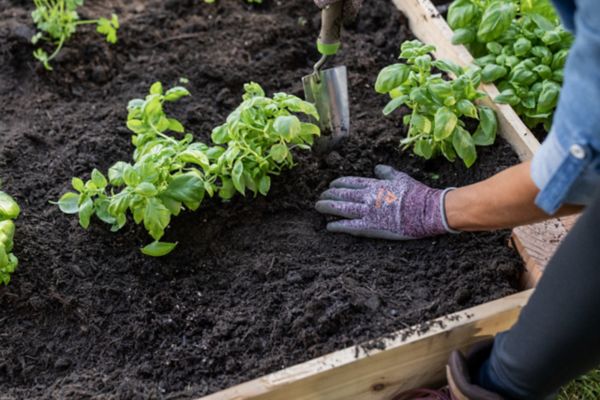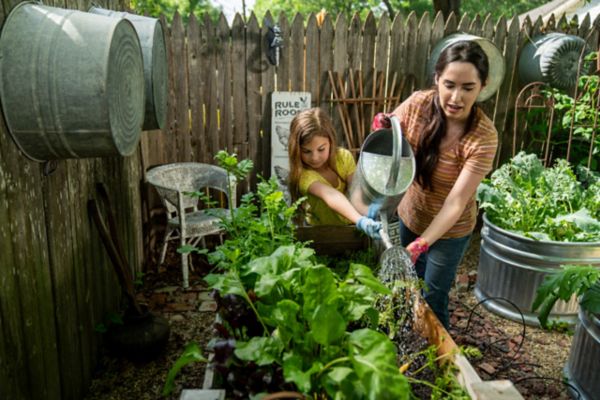How to Grow Zucchini
Authored by Leah Chester-Davis
Zucchini falls into the summer squash category. It is noted as being quite prolific, to the point that folks often joke about neighbors leaving zucchini on neighbors’ doorsteps in the middle of the night, just to get rid of the bountiful harvest.
Not only will zucchini make you feel like a gardening pro, but this versatile vegetable can also be used in many different culinary dishes, including soups, pastas, pizza toppings, side dishes, slaws, salads, breads, and cakes. It’s even a stand-in for pasta when it is turned into noodles with a spiralizer. It can be fried, roasted, steamed, microwaved, or grilled. Even the flowers are edible. With all the possibilities, bring on the bumper crop!
Zucchini is rich in many vitamins, minerals, and antioxidants that contribute to a healthy body. It is also low in calories and high in fiber. Squash is one of the plants used in the Three Sisters method of planting, which dates back to Native Americans.
This popular squash typically grows cylindrically, but there are varieties that grow in a ball shape. ‘Eight F1 Ball’ is one that is an All-America Selections winner. There also are deep green, pale green, yellow, green striped, and yellow striped varieties.
About zucchini
| Botanical name: | Cucurbita pepo var. cylindrica |
| Common name: | Zucchini |
| Plant type: | Annual vine |
| Size: | 1 to 3 feet tall and 2 to 3 feet wide; fruits 6 to 8 inches long |
| Sun exposure: | Full sun |
| Soil type: | Fertile, well-drained |
| Soil pH: | 6.0 to 7.2 |
| Hardiness zones: | 2 to 11 |
| Average first frost: | Varies by region |
| Average last frost: | Varies by region |
| Container friendly: | Yes |
| Beginner friendly: | Yes |
Growing

Zucchini grows best in rich, well-drained soil with a pH of 6.0 to 7.2. Incorporating plenty of well-rotted manure or compost, about 4 inches tilled to 10 inches before planting will help yield good results. To determine the soil pH, get your soil tested. Soil test kits are available for free or for a nominal fee from your county Extension office. Follow recommendations for amending your soil. In the absence of a soil test, see fertilization guidelines. The site needs to receive full sun, preferably at least 8 hours per day.
The seed can be sown directly into the well-prepared soil when the danger of frost has passed, and the soil has warmed to at least 65 degrees F. Soil thermometers are inexpensive and available in most garden centers. Zucchini can also be started early indoors and then transplanted into the garden. Transplants are also readily available in the garden center.
Planting

Plant 3 to 4 seeds together in a small hill or mound about 2 to 3 feet apart in rows. The hills need to be about 2 to 3 inches high with soil. Plant the seeds about ½ inch deep. Allow at least 3 feet between rows. When the seedlings reach about 3 inches in height, they may need to be thinned to 2 plants per hole. If space is limited, squash can be grown in a large container or in a raised bed.
Water the plants when planting and daily until the plants are established. Use soaker hoses, drip irrigation, or water at the base of the plant to avoid getting the foliage wet, especially late in the day which can increase the chance of foliar diseases. The plants will need about 1 inch of water per week. Add a layer of straw mulch around the plants to help keep moisture levels even, suppress weeds, and to give a base for fruits to lay on and stay dry.
Zucchini will typically produce fruit about 50 to 65 days (about 2 months) after planting, depending on the variety. To extend the season, make a second planting in mid-summer, from early to mid-July. When zucchini blooms, it will be only a few days until squash is ready to pick.
Fertilizing
Follow soil test recommendations. In the absence of a soil test, Arkansas Extension recommends incorporating 2 pounds of 10-10-10 fertilizer per 100 square feet (about the area of an apartment bedroom) of garden. If transplants are used, apply a transplant fertilizer starter at the time of planting. Mix one tablespoon of a soluble fertilizer high in phosphorus such as 10-20-10 into a gallon of water and apply one cup of solution per plant. Or use an organic choice; follow label directions.
Fertilization is beneficial again about 3 to 4 weeks after harvesting has started. Work 1 to 2 tablespoons of 10-10-10 into the soil per plant.
Controlling Pests, Diseases, and Other Problems
Squash vine borers tunnel into the crowns and stems and cause the plant to wilt. Squash bugs feed on the leaves. Spotted and striped cucumber beetles eat all parts of the plant. Powdery mildew causes white spots to form on the leaves and vines. Anthracnose causes tan spots on the leaves. Some rots can affect the fruits, especially during wet periods. To give your plants the best chance to withstand any insects or disease, implement good cultural practices such as buying disease-free seeds and transplants, practice crop rotation and grow plants in a location where no other plants from the same family have been grown for 2 to 4 years. Keep weeds controlled by mulching. Give the plant room to grow for adequate air circulation. Keep the plant watered but avoid overhead sprinklers to keep the foliage dry to help reduce foliar diseases.
Harvesting and Storing

Zucchini is ready to harvest when the fruit is around 6 to 8 inches long and less than 2 inches in diameter. This is when it will be most tender and flavorful. Harvest every couple of days to keep the plant productive. If any squash grows large, remove it from the plant for its health. To avoid injury to the vine, cut the fruit from the vine with clean scissors or a sharp knife. Zucchini is tender so handle carefully to avoid bruising.
Squash blossoms are a delicacy and worth a try. They are typically stuffed with a creamy cheese like ricotta, lightly battered, and fried, but they can be tossed in soups, salads, and pastas. To keep your plants producing fruit, harvest only the male blossoms from the plant though either male or female blossoms can be cooked and eaten. Zucchini will have both male and female blossoms. The female will have a tiny, immature fruit that sits just behind the petal. The males will have a straight, thin stem just behind the petals. The males will not mature into a squash, so you are not sacrificing production by enjoying a few blossoms. Bees do visit both blossoms and transfer pollen from the male to the female plants, but most plants produce plenty of male blossoms so that picking a few should not hurt pollination. Use harvested blossoms within 24 hours.
Storing
Use summer squash within a few days. It will not last as long as the hard-skinned winter varieties. Store in the refrigerator for up to 7 days. Do not wash before storing. Place it in a perforated plastic bag with a paper towel to absorb extra moisture. Squash can also be frozen, pickled, or canned with tomatoes and okra. The National Center for Home Food Preservation shares many techniques and recipes.
An easy way to freeze is to wash and cut in ½-inch slices, blanch in boiling water 3 minutes. Cool and drain. Package in freezer containers, leaving ½ inch headspace. Seal and freeze.
Squash blossoms are a delicacy and worth a try.
Expert Tips

- Squash Bossa Nova F1 is an All-America Selections winner from a few years back. Rather than dark green skin, it has a dark and light green mottled exterior. It is produced earlier in the season than many other varieties on a compact plant.
- Plant squash 2 or 3 times during the growing season to enjoy a longer harvest season.
- Avoid using any pesticides during the bloom period to reduce the risk of poisoning pollinators.
- Do not pick fruit when the vines are wet to help reduce the chance of spreading foliar diseases.
- Four plants may be sufficient for a family of four, depending on your family’s taste preferences and whether you wish to preserve any of the harvest for future use.
Frequently asked questions
Am I out of luck if pollinator activity is very low?
Most gardeners are concerned about the increasing threats to bees and other pollinators. If insect activity is low, one sign is that the female flowers will drop. George Extension recommends using a cotton swab to pollinate the plants. Gather pollen from the male flower, which has a long, thin stem behind the blossom and distribute it onto the stigma in the center of the female flower, which has a tiny beginning of a squash sitting just behind the blossom.
What can I do about fruit rotting on the ground?
Damp, rainy weather can cause the fruit to decay. Add a layer of straw mulch around the plants to help give the fruit a bed that will keep them off the ground and dry.
How can I prevent squash vine borers from causing my plants to wilt and die just when they start producing?
Vine borers must be caught early before they enter the vines. Arkansas Extension recommends beginning control measures about when the plants start to bloom by applying an insecticide at the base. Follow label directions. During the fall growing season, treatment begins shortly after the plant appears.
How can I prevent squash vine borers from causing my plants to wilt and die just when they start producing?
Vine borers must be caught early before they enter the vines. Arkansas Extension recommends beginning control measures about when the plants start to bloom by applying an insecticide at the base. Follow label directions. During the fall growing season, treatment begins shortly after the plant appears.






